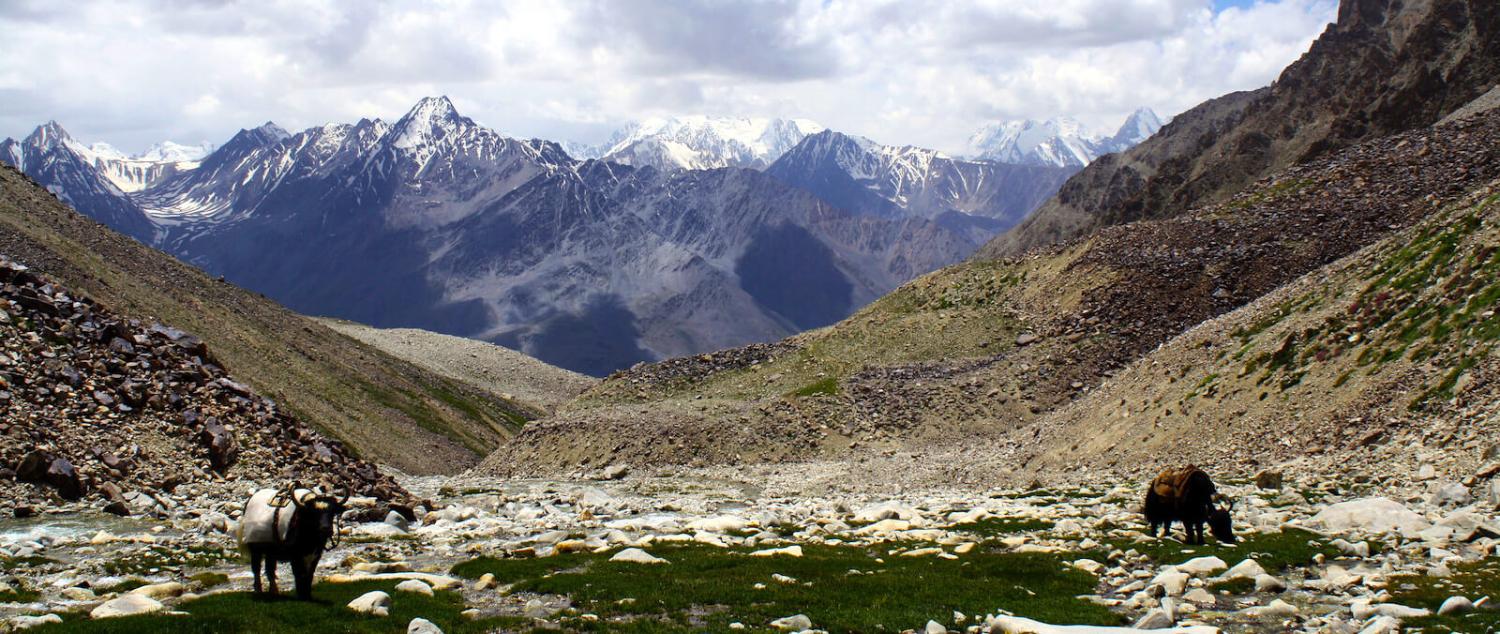As the world keeps shrinking, finding out about places you’ve never heard of is something of a thrill. Some of the most interesting Interpreter pieces of this year focused on the unique and unusual corners of the map.
One such corner is the Wakhan Corridor – a sliver of land that connects Afghanistan to China’s Xinjiang province, bordered by Tajikistan to the north and Pakistan to the south. The Corridor came to our attention thanks to rumours of Chinese troops being stationed across the border in Afghan territory. Suzanne Levi-Sanchez:
Throughout the period of the Great Game (and before) China also fought for territory in the Wakhan Corridor, and recently won back a small stretch of land in the far northeastern corner of Tajikistan that had been under dispute since the mid-1800s (between Tsarist Russia and China). This section, rumoured to be rich in mineral wealth, was ceded to the Chinese by the Tajik government in 2011 as payment for debts the Tajik government owed to China for construction of several roads and bridges. The Tajiks living in the villages in these areas were forced to relocate to even more austere locations, lacking in water or arable land for farming or livestock.
Another is Nagorno-Karabakh, a disputed territory geographically located within Azerbaijan but governed by ethnic Armenians. Luke Dawes wrote about how Armenian-Azeri disagreements could upset Russia and Turkey’s cooperation in Syria:
As the Syrian civil war is winding down, both Russia and Turkey are responding pragmatically to changes on the ground. Islamic State has been eradicated from much of the country, and the Syrian Government has retaken control of key cities from rebel groups. Turkey has sought – and received – Russian approval for airstrikes against the YPG in northern Syria, and the two countries met with Iran in April to cooperate on a post-war plan for stability. This cooperation, however, could well be threatened by their opposing positions in the Armenia–Azerbaijan conflict: Russia and Turkey have previously traded stern words over Nagorno-Karabakh.
Central Asia rarely makes headlines in Western newspapers. But Kazakhstan, the ninth largest country in the world by area, is playing a leading role in regional diplomacy, worrying Russia. Stephen Blank:
Kazakhstan hosted a summit of all the Central Asian states in March 2018, where President Nursultan Nazarbayev argued that Central Asia could solve its problems without outside ‘mentors’. Observers saw this meeting as the assertion of sovereignty by Central Asian states, indicating a new readiness to act on their own in ‘big politics’. Inevitably, this generated Russian concerns. Central Asian states are still subject to their geography, so they will all need to respect Russian and Chinese interests. Nevertheless, Kazakhstan and the other Central Asian states are showing signs they will step out of their giant neighbours’ shadows.
The Himalaya region runs along (mostly disputed) borders between China, India, Nepal, and Bhutan. It is home to a mosaic of ethnic groups, the world’s third-largest ice-deposits, and simmering geopolitical tension. Alexander Davis, Ruth Gamble, Gerald Roche, and Lauren Gawne:
This normalised state of border scuffles escalated last year in the Doklam standoff when China tried to wrest a piece of high-ground on the China-Bhutan border from Indian troops. Both Bhutan and Nepal have been placed in difficult positions by India-China tensions. China’s Belt and Road development plans in Nepal and Pakistan have exacerbated regional tensions. This friction has led to both the militarisation and competitive development of the region. Hundreds of thousands of troops are stationed across the mountains and all Himalayan states are engaged in competitive, un-checked development projects aimed at least in part at solidifying territorial control.
The Andaman Islands featured in headlines when a US missionary was killed by members of an isolated tribe on one of the islands. Aarti Betigeri wrote about the Indian government’s desire to expand its military presence on some of the islands and open up others to tourism.
The Andaman and Nicobar Islands are a group of 572 islands, roughly equidistant from both Kolkata and Chennai, about 1,200 kilometres each way to the mainland. Just 37 islands are permanently inhabited, by a mix of indigenous tribes and Indians who moved there after the Second World War. The Nicobar islands have always remained off-limits to outsiders, while only a handful of the Andamans have been open to tourists. One of the islands’ recognised tribal groups is the Jarawas, sometimes described as the ‘last descendants of the first modern humans’, still living a largely hunter-gatherer lifestyle.
What about the forgotten corners of the Pacific? Bruce Hill asked provocative questions about the political and economic independence of small island nations such as Niue, Tokelau, and Palau.
The harsh reality is that while many Pacific nations are doing fine as independent entities, others face daunting challenges that raise real questions about their status. For a start, the smaller states are very vulnerable to natural disasters. One massive cyclone, tsunami or earthquake hitting countries the size of Niue, Tokelau or Palau could conceivably destroy their economies. An even more serious challenge is population shift from island mini-states to the metropolitan countries in or bordering the region, such as Australia, New Zealand, and the United States.
Finally, Morris Jones wrote on the strategic aspect of the ultimate forgotten corner: the moon.
Decades after the Moon became covered in American flags and footprints, the nearest world in space is becoming strategic again. Recently, China launched a satellite to orbit the L2 Earth-Moon Lagrange point. This is an imaginary point in space hovering over the far side of the Moon (not the ‘dark’ side, despite the references in sloppy journalism elsewhere and Pink Floyd).

